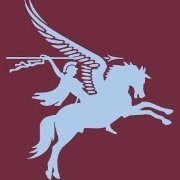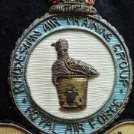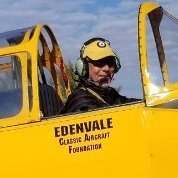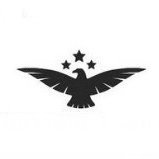-
Posts
247 -
Joined
-
Last visited
-
Days Won
2
Big Tony last won the day on April 21 2017
Big Tony had the most liked content!
About Big Tony
- Birthday 08/07/1970
Profile Information
-
Gender
Male
-
Location
Lancashire, England
-
Interests
British Aviation, Airborne Forces
Recent Profile Visitors
3,156 profile views
-
 Castor reacted to a post in a topic:
1/32nd FLY Sea Hurricane Mk.IIc, 825 NAS Fighter Flight, HMS Vindex 1944.
Castor reacted to a post in a topic:
1/32nd FLY Sea Hurricane Mk.IIc, 825 NAS Fighter Flight, HMS Vindex 1944.
-
 Big Tony reacted to a post in a topic:
1/32 Tamiya – Laminar Flow Design Spitfire Mk.Vc
Big Tony reacted to a post in a topic:
1/32 Tamiya – Laminar Flow Design Spitfire Mk.Vc
-
Very nice indeed,...... well worth the effort.
-
 Big Tony reacted to a post in a topic:
WALRUS 1/32 HPH
Big Tony reacted to a post in a topic:
WALRUS 1/32 HPH
-
Love it, very impressive.
-
 Big Tony reacted to a post in a topic:
1/32 Trumpeter P-40N in-flight
Big Tony reacted to a post in a topic:
1/32 Trumpeter P-40N in-flight
-
 Big Tony reacted to a post in a topic:
Airfix 1/24th Spitfire Mk.IX, 244 Wing, Malta 1943 flown by Wing Commander WGG Duncan-Smith.
Big Tony reacted to a post in a topic:
Airfix 1/24th Spitfire Mk.IX, 244 Wing, Malta 1943 flown by Wing Commander WGG Duncan-Smith.
-
 Big Tony reacted to a post in a topic:
Airfix 1/24th Spitfire Mk.IX, 244 Wing, Malta 1943 flown by Wing Commander WGG Duncan-Smith.
Big Tony reacted to a post in a topic:
Airfix 1/24th Spitfire Mk.IX, 244 Wing, Malta 1943 flown by Wing Commander WGG Duncan-Smith.
-
 Kagemusha reacted to a post in a topic:
Airfix 1/24th Spitfire Mk.IX, 244 Wing, Malta 1943 flown by Wing Commander WGG Duncan-Smith.
Kagemusha reacted to a post in a topic:
Airfix 1/24th Spitfire Mk.IX, 244 Wing, Malta 1943 flown by Wing Commander WGG Duncan-Smith.
-
 The F-16 Freak reacted to a post in a topic:
Airfix 1/24th Spitfire Mk.IX, 244 Wing, Malta 1943 flown by Wing Commander WGG Duncan-Smith.
The F-16 Freak reacted to a post in a topic:
Airfix 1/24th Spitfire Mk.IX, 244 Wing, Malta 1943 flown by Wing Commander WGG Duncan-Smith.
-
 Sasha As reacted to a post in a topic:
Airfix 1/24th Spitfire Mk.IX, 244 Wing, Malta 1943 flown by Wing Commander WGG Duncan-Smith.
Sasha As reacted to a post in a topic:
Airfix 1/24th Spitfire Mk.IX, 244 Wing, Malta 1943 flown by Wing Commander WGG Duncan-Smith.
-
 Cicciuzzo reacted to a post in a topic:
Airfix 1/24th Spitfire Mk.IX, 244 Wing, Malta 1943 flown by Wing Commander WGG Duncan-Smith.
Cicciuzzo reacted to a post in a topic:
Airfix 1/24th Spitfire Mk.IX, 244 Wing, Malta 1943 flown by Wing Commander WGG Duncan-Smith.
-
 Big Tony reacted to a post in a topic:
Airfix 1/24th Spitfire Mk.IX, 244 Wing, Malta 1943 flown by Wing Commander WGG Duncan-Smith.
Big Tony reacted to a post in a topic:
Airfix 1/24th Spitfire Mk.IX, 244 Wing, Malta 1943 flown by Wing Commander WGG Duncan-Smith.
-
 Brett M reacted to a post in a topic:
Airfix 1/24th Spitfire Mk.IX, 244 Wing, Malta 1943 flown by Wing Commander WGG Duncan-Smith.
Brett M reacted to a post in a topic:
Airfix 1/24th Spitfire Mk.IX, 244 Wing, Malta 1943 flown by Wing Commander WGG Duncan-Smith.
-
 MikeC reacted to a post in a topic:
Airfix 1/24th Spitfire Mk.IX, 244 Wing, Malta 1943 flown by Wing Commander WGG Duncan-Smith.
MikeC reacted to a post in a topic:
Airfix 1/24th Spitfire Mk.IX, 244 Wing, Malta 1943 flown by Wing Commander WGG Duncan-Smith.
-
 Uncarina reacted to a post in a topic:
Airfix 1/24th Spitfire Mk.IX, 244 Wing, Malta 1943 flown by Wing Commander WGG Duncan-Smith.
Uncarina reacted to a post in a topic:
Airfix 1/24th Spitfire Mk.IX, 244 Wing, Malta 1943 flown by Wing Commander WGG Duncan-Smith.
-
 Big Tony reacted to a post in a topic:
Airfix 1/24th Spitfire Mk.IX, 244 Wing, Malta 1943 flown by Wing Commander WGG Duncan-Smith.
Big Tony reacted to a post in a topic:
Airfix 1/24th Spitfire Mk.IX, 244 Wing, Malta 1943 flown by Wing Commander WGG Duncan-Smith.
-
 Big Tony reacted to a post in a topic:
Airfix 1/24th Spitfire Mk.IX, 244 Wing, Malta 1943 flown by Wing Commander WGG Duncan-Smith.
Big Tony reacted to a post in a topic:
Airfix 1/24th Spitfire Mk.IX, 244 Wing, Malta 1943 flown by Wing Commander WGG Duncan-Smith.
-
 Big Tony reacted to a post in a topic:
Airfix 1/24th Spitfire Mk.IX, 244 Wing, Malta 1943 flown by Wing Commander WGG Duncan-Smith.
Big Tony reacted to a post in a topic:
Airfix 1/24th Spitfire Mk.IX, 244 Wing, Malta 1943 flown by Wing Commander WGG Duncan-Smith.
-
 Biggles87 reacted to a post in a topic:
Airfix 1/24th Spitfire Mk.IX, 244 Wing, Malta 1943 flown by Wing Commander WGG Duncan-Smith.
Biggles87 reacted to a post in a topic:
Airfix 1/24th Spitfire Mk.IX, 244 Wing, Malta 1943 flown by Wing Commander WGG Duncan-Smith.
-
 Dpgsbody55 reacted to a post in a topic:
Airfix 1/24th Spitfire Mk.IX, 244 Wing, Malta 1943 flown by Wing Commander WGG Duncan-Smith.
Dpgsbody55 reacted to a post in a topic:
Airfix 1/24th Spitfire Mk.IX, 244 Wing, Malta 1943 flown by Wing Commander WGG Duncan-Smith.
-
 Big Tony reacted to a post in a topic:
Build you own Hangar with lights!
Big Tony reacted to a post in a topic:
Build you own Hangar with lights!
-
Airfix 1/24th Spitfire Mk.IX, 244 Wing, Malta 1943 flown by Wing Commander WGG Duncan-Smith; Atchashikar- Hindi for 'Good Hunting’,…. Was the name applied to most of his Spitfire`s and alluded to his early life in India. Group Captain Wilfrid George Gerald Duncan Smith, DSO & Bar, DFC & Two Bars, AE (28 May 1914 – 11 December 1996) was a WW2 RAF fighter ace and also the father of Sir Iain Duncan- Smith, Conservative Party MP and former Guards officer. To avoid confusion it must be mentioned that Wilfred George Gerald Duncan Smith was given his mother's maiden name (Duncan) as a middle name—a fairly conventional practice of the Edwardian period—but his father's name was "Smith", not "Duncan Smith" and, in WW2 RAF records he is always listed as W. G. G. D. Smith, not W.G.G. Duncan-Smith while his nickname was `Smithy’. It is not known precisely when he started using his mother's maiden name as part of his surname but he decided to pass the double barrelled name Duncan-Smith on to his children and as he appears to have chosen this name himself later in life, I shall refer to him here as WGG Duncan-Smith. WGG Duncan- Smith was born in Madras, India (now Chennai) on 28th May 1914, the son of a Mysore Post Office Superintendent, Wilfrid Arthur Smith and Anna Cecilia Smith (née Duncan). He was educated at Nairn and Morrison's Academy, Crieff, in Scotland, where he joined his school's Officers' Training Corps. Returning to India in 1933, he became a coffee and tea planter, but in 1936 returned to Britain to work as a mechanical engineer, and then was a salesman for Great Western Motors in Reading. With war looming, he joined the Royal Air Force Volunteer Reserve (RAFVR). At the outbreak of war Duncan- Smith was a Sergeant under training but he was commissioned as a Pilot Officer on 29th September 1940 at 7 Operational Training Unit before being posted to fly Spitfire Mk.I`s with 611 Squadron RAF at RAF Hornchurch in October 1940. He was awarded a Distinguished Flying Cross (DFC) in June 1941 and joined 603 Squadron in August 1941 as a Flight Commander, although by this time he was due for a rest from operational flying. On 20th November he was taken ill during a convoy patrol and upon landing he was found passed out in the cockpit. The prognosis was double pneumonia, brought on no doubt by the exhaustion of a long operational tour and he was hospitalised for treatment. Upon recovery in January 1942, Duncan- Smith rejoined the Hornchurch Wing which was now flying the much improved Spitfire Mk.IX. In March 1942 he was promoted to acting Squadron Leader and given command of 64 Squadron RAF. During the ill-fated Dieppe Raid on 19 August, Duncan- Smith was shot down by an enemy fighter but rescued from the English Channel by a naval gunboat with injuries and eardrum pain. In August he became acting Wing Commander flying at RAF North Weald and in November he was rested from operations to take charge of the Tactics Branch at Fighter Command, his input eventually leading to the formation of the Fighter Command School of Tactics at RAF Charmy Down. While Duncan Smith's non-operational tour was recognised as very productive, he wanted to return to operations, and in May 1943 he was posted to Malta to take over the Luqa Spitfire Wing. He flew his first sortie on the morning of 3rd June as escort to Adrian Waarburton in his PR Spitfire bound for Syracuse to take photos for the forthcoming invasion of Sicily and for this Duncan-Smith`s mount was Spitfire Mk.V AR560 which still wore the JMT codes of its previous owner Wg Cdr Thompson whom he had replaced. This aircraft appears in a series of well known photos taken during the opening of Safi Strip. At dusk on the 12th July 1943 Duncan-Smith was flying his own `personal’ Spitfire, JK650 (see model notes for variant!) bearing his DS initials when it was badly damaged in combat with the fuselage, elevators and rudder being holed by cannon fire but thankfully he was able to return and land safely in Malta on Safi Strip. He later commented, “My Spitfire was in a mess. Cannon shells had blasted a couple of large holes in the side. One had burst against the radio and armour behind my seat. Another, having made a hole the size of a football, had torn the control wires to shreds. The elevator was hanging by one thread of frayed wire and my rigger neatly snapped this with a sharp blow from his fingers. "You will not be needing that anymore, he grinned at me, it all looks very untidy – doesn't it? Another cannon shell had torn big pieces out of the elevator and rudder surfaces”. His adversary that day could have been Lt. Franz Barten of 4./JG 53 who claimed a Spitfire east of Ramacca, Feldwebel Heinrich Steis from 4./JG 27 or even Oberfeldwebel Günther "Hupatz" Seeger of 7./JG 53. After a shake up of the wings based in Malta prior to the invasion of Sicily part of the Luqa Wing moved to the new Safi Strip and Duncan-Smith moved to Desert Air Force control to become Wing Commander Flying of 244 Wing at Luqa under Group Capt, Brian Kingcome and they helped cover the Sicilian landings, eventually moving there. On the 2nd September 1943 Duncan- Smith suffered engine failure while test flying a new Spitfire MK.VIII, JF405 when a switch between fuel tanks failed. He was forced to bail out into the sea and injured his kneecap in the process when his leg struck the tailplane. After more than six hours adrift in his life jacket he was spotted by a Spitfire from 145 Sqn and an Air Sea Rescue Walrus from 283 sqn arrived to pick him up but just as he was being dragged aboard the amphibian it was strafed by three Bf109`s! Describing this incident Duncan-Smith said “The Walrus was badly holed below the water and a cannon shell had pierced the wing tank, but luckily, though petrol spewed all over the place, the old bus did not catch fire. The blow I felt was from a bullet that tore through the collar of my Mae West grazing my neck before smacking into the Walrus. We got down at Milazzo safely, after a brilliant landing by the pilot, and I was whisked off to the American field hospital close by. There they were very kind and after fixing up my leg and dressing the neck wound tried to keep me for the night, but I managed to talk the doctor into letting me return to Lentini. The Walrus was a total wreck having been damaged in too many vital parts”. South African Spitfires from 1 Sqn SAAF were flying top cover for the rescue but they were attacked by FW190`s and Italian Mc202`s and Re2001`s and sadly Lt. Richard `Dick’ Cherrington SAAF flying Spitfire Mk.VIII, JF405 was shot down in flames and killed, possibly falling to Unteroffizier Alfred Scharl of 1. /JG 53 who was credited with a kill at 1720hrs on 2nd September 1943, 15 km north of Tropea at low altitude. The identity of the German pilot who severely damaged the Walrus is not known. After suffering from severe sunburn whilst adrift plus the effects of his various operational injuries, wounds and the return of his ear pain from Dieppe in 1942, Duncan Smith was considered unfit for operations, so as an acting group captain, he took charge of 324 Wing in a limited flying role until March 1945, although he did still fly operationally and his final claim of the war was made over Anzio with 324 Wing on 29th February 1944 when he damaged a Bf109 while flying Spitfire Mk.IX, MH884/DS which was his personal aircraft that he flew from 1944-45 based in Corsica and later Ravenna in Italy. During WW2 Duncan- Smith was credited with 17 enemy aircraft shot down, two shared destroyed, six probables, two shared probables and eight damaged in aerial combat. He was awarded the Distinguished Service Order and Bar and the DFC and Bar and he later wrote the book `Spitfire into Battle’ about his wartime exploits which was first published in 1981. After returning to the UK, Duncan- Smith returned to civvy street post war but rejoined the newly established RAFVR on 3rd December 1946 as a temporary Squadron Leader but reverted to Flight Lieutenant in November 1947, with seniority back to 1942! He rejoined the RAF full time on 22nd March 1948 with a permanent RAF commission as a Squadron Leader and he received a second Bar to his DFC for leading 60 Sqn with Spitfire FR.18`s in the Malayan Emergency in 1952. Promoted to Wing Commander in January 1953, WGG Duncan-Smith retired on 24 November 1960 as a Group Captain. Wing Commander WGG Duncan-Smith with the 244 Wing mascot Bonzo. The real JK650, a Spitfire Mk.IX flown by Wing Commander WGG Duncan-Smith when he was Wing Commander Flying of 244 Wing based on Malta in 1943. The serial JK650 falls within a batch of Mk.Vc`s so may have been re engined at the factory to make it a Mk.IX, the article has more info about this aircraft. Photo courtesy of DK Decals. The Model; ,…. From Airfix is the lovely 1/24th scale Spitfire Mk.IX and it was built straight from the box with the addition of decals from DK Decals. I have already posted a few `in progress’ built posts and was very impressed by construction which I enjoyed immensely. The engine is a kit in its own right and the cockpit is superbly detailed too but I did struggle trying to retain some of the excellent detail on the cowling panels as the fit was not brilliant and some filler was needed. More filler was needed along the main seam lines due to the soft plastic employed by Airfix which seems to cause me problems when trying to sand the seams flush! The gun bays in the wings are also nicely detailed. The model was brush painted using Polly Scale acrylic Azure Blue for the undersides and US Sea Blue to replicate the dark blue applied to many Malta based aircraft between 1942-43. There is some controversy about what the exact colour was and it ranges from old pre war Royal Navy motor transport paint from the dockyard, a mixed blue or RAF Dark Mediterranean Blue. The RN began to paint the submarines of Malta`s 10th Sub Flotilla and Manoel island a similar blue colour which was so effective that it was later introduced officially throughout the Med and I like to think that this stemmed from a cache of pre war MT paint which the RAF also managed to get hold of after seeing the subs from the air and talking with their naval colleagues `down town’ in Valletta over a few `scoops’. Many of the blue Spits were indeed polished to a very high sheen which would bear this theory out and the blue would have been mixed with other colours such as black to make it go further. DK Decals include the serial JK650 for Duncan-Smith`s but was this a Mk.Vc or a Mk.IX? The serial falls right in the middle of a block of Spitfire Mk.Vc`s and it has been described as being a Mk.Vc in some well researched books,….. BUT,….. it is also described as a Mk.IX in others too and to back this up it appears as a Mk.IX on this website; http://www.airhistory.org.uk/spitfire/abbreviations.html) as a solitary Mk.IX surrounded by Mk.Vc`s within a block of 42 aircraft serialled JK637-JK678 under order 81687/39 from the Castle Bromwich factory and its history cards reads; JK650 Mk.IX CBAF M63 9MU 16-3-43 47MU 29-3-43 'Essex Trader' 10-4-43 Casablanca 25-4-43 126Sq Caught in slipstream and crashed on t/o Safi CA 31-8-43 Sgt DE Minton safe CB 28-2-44 SOC 15-3-45 Another internet source agrees with this and the movements card reads as; model: IX factory: CBAF engine: M63 9MU 16-3-43 47MU 29-3-43 Essex Trader 10-4-43 Casablanca 25-4-43 FAC2 28-2-44 SOC 15-3-45 So,…. Was JK650 a Mk.IX? The only photo that I have available as reference is inconclusive as the serial is hard to read! Another Mk.IX flown by Duncan-Smith in 1943 was MA281 and a later Mk.IX was MH884/ DS which he flew as his personal aircraft with 324 Wing from Corsica to Ravenna in 1944-45 but this appears to wear the day fighter scheme. He damaged an FW190 in this latter aircraft over Anzio on the 29thFebruary 1944, his final claim of the war. A few build and painting pics; Cheers, Tony EDIT,......... I have had a problem with the photos dropping off my posts on LSP,..... if this occurs again my Spitfire can also be seen on Facebook here on my modelling page; https://www.facebook.com/groups/1466729883775310/search/?q=1%2F24 spitfire
-

1/32 PCM Hawker Hurricane Mk.1 (Early)
Big Tony replied to Tolga ULGUR's topic in Ready for Inspection
What a lovely Hurri,...... respect! -
Oh wow, that is very nice indeed, I love the interior detail too! I have one of these in the loft but there are quite a few missing parts holding me back from having a go at tarting it up a bit!
- 28 replies
-
- scrath built
- r2800
- (and 4 more)







